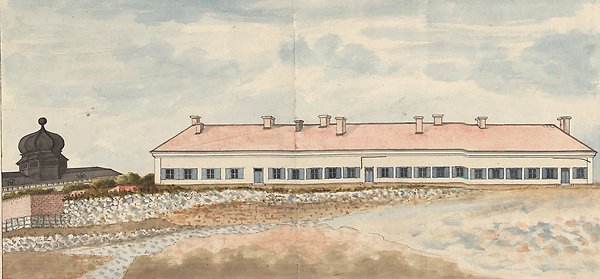Exercitia
The person who conducts the Royal Academic Orchestra, the University’s orchestra, is often referred to as the director musices. Why do we use such an antiquated title rather than the word ‘conductor’?
To understand this, we have to step more than four hundred years back in time. The University was still largely characterised by the education that defined it in the Middle Ages. Most of the students were destined for the Church, and even for those who had other ideas, studies were dominated by theology and the languages associated with biblical studies, Hebrew, Greek and Latin.
However, during and after the reign of Gustav II Adolf, young people with different ambitions began to find their way to the academy, which is what the University was always called at that time. The students were young nobles and belonged to the aristocratic circles that the king gathered round him. They were not really interested in the ancient languages, with the exception of Latin, which was then the lingua franca the way English is in our day.
After completing their education, these nobles would travel abroad as diplomats, civil servants or officers, and wanted to be able to speak the national vernaculars, primarily French, Italian and Spanish – they generally knew German fairly well from home. They wished to be able to ride, fence and dance, and to have a knowledge of modern music and be reasonably good at drawing, at least for private purposes. Furthermore, it was not unimportant to know how to comport oneself in society.
Both Gustav II Adolf and his successors on the throne were keen to have Uppsala University develop the function of providing practical career training to these groups of students.
%20F%C3%B6rsta%20trafven%201900.jpg)
The artist John Arsenius (1818–1903) made a series of drawings depicting scenes from the riding school. This drawing is from 1839 and is entitled Första trafven (‘First trot’). The person in the picture is saying: “I request permission to stop and dismount.”
Change was rather slow in coming and it wasn’t until February 1663 that anything happened. Magnus Gabriel De la Gardie was the University Chancellor at the time, and Olof Rudbeck was the most influential person in Uppsala. It was then that a royal decree was issued, ordering the University to establish regular instruction in practical disciplines termed exercitia, meaning ‘exercises’. Equestrianism was especially important, and to ensure that this was looked after properly, Rudbeck had a large riding school built on the very site where the University Main Building stands today. It was called the Exercise House and stood until the late 1870s.

The Exercise Yard. Watercolour by Johan Gustaf Härstedt, 1756–1820.
The field of exercitia has had a long and varied history. The language masters, as they were called within modern languages, disappeared long ago, and instruction in these subjects is now offered at the Faculty of Languages.
Riding remains popular among present-day students, who can apply for riding scholarships. The Royal Academic Orchestra also plays a major role in Uppsala, a city full of music and choirs.
Current masters
Even today, Uppsala University has a fencing master, a master of the academic stables and an inspector equitandi, who oversees riding. Though there are no gymnastics or sports instructors these days, students have access to fitness activities via the Student Health Service and Campus 1477. The orchestra is led by the director musices and there is an artist in charge of drawing who has the title Director of Drawing in this connection.
